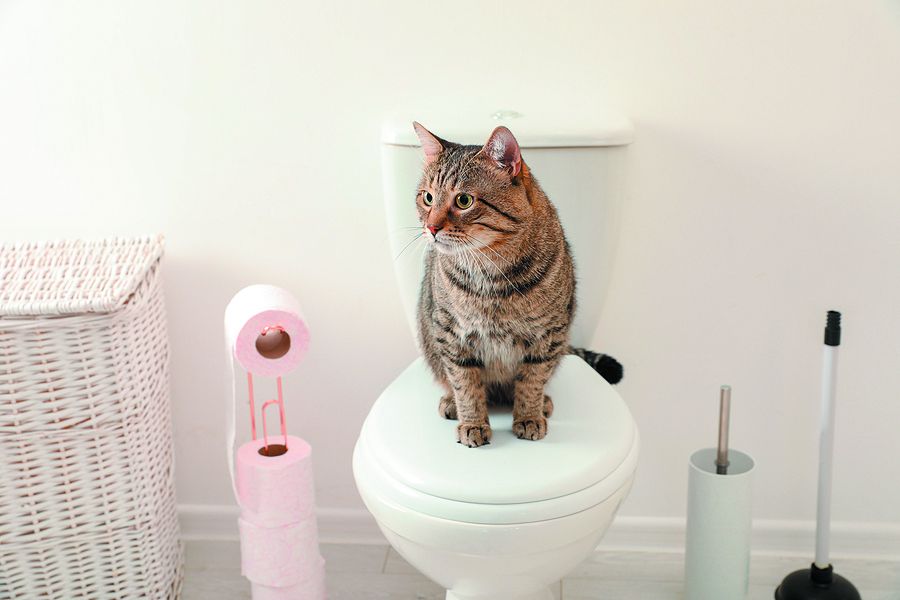Reasons Flushing Cat Poop Down Your Toilet Isn't a Good Idea - Tips for Safer Disposal
Reasons Flushing Cat Poop Down Your Toilet Isn't a Good Idea - Tips for Safer Disposal
Blog Article
The publisher is making several great pointers about Don’t flush cat feces down the toilet in general in this great article down the page.

Intro
As feline owners, it's important to bear in mind exactly how we dispose of our feline good friends' waste. While it may appear convenient to purge pet cat poop down the bathroom, this technique can have damaging consequences for both the atmosphere and human wellness.
Environmental Impact
Purging cat poop presents harmful virus and parasites into the water, presenting a substantial danger to water ecological communities. These pollutants can adversely influence marine life and concession water quality.
Health and wellness Risks
In addition to environmental problems, flushing cat waste can additionally pose health and wellness threats to humans. Feline feces might include Toxoplasma gondii, a bloodsucker that can create toxoplasmosis-- a potentially serious health problem, specifically for pregnant ladies and people with damaged body immune systems.
Alternatives to Flushing
Fortunately, there are much safer and a lot more liable ways to throw away pet cat poop. Take into consideration the adhering to alternatives:
1. Scoop and Dispose in Trash
The most common technique of throwing away cat poop is to scoop it into a biodegradable bag and throw it in the trash. Be sure to use a committed litter scoop and deal with the waste quickly.
2. Use Biodegradable Litter
Choose naturally degradable feline trash made from materials such as corn or wheat. These litters are environmentally friendly and can be securely taken care of in the garbage.
3. Hide in the Yard
If you have a backyard, think about burying feline waste in an assigned area away from vegetable yards and water resources. Be sure to dig deep enough to prevent contamination of groundwater.
4. Install a Pet Waste Disposal System
Invest in a pet dog garbage disposal system especially created for pet cat waste. These systems utilize enzymes to break down the waste, minimizing odor and environmental effect.
Final thought
Responsible animal ownership expands past supplying food and shelter-- it likewise involves proper waste monitoring. By avoiding flushing pet cat poop down the commode and going with alternative disposal techniques, we can minimize our ecological footprint and secure human health and wellness.
Why Can’t I Flush Cat Poop?
It Spreads a Parasite
Cats are frequently infected with a parasite called toxoplasma gondii. The parasite causes an infection called toxoplasmosis. It is usually harmless to cats. The parasite only uses cat poop as a host for its eggs. Otherwise, the cat’s immune system usually keeps the infection at low enough levels to maintain its own health. But it does not stop the develop of eggs. These eggs are tiny and surprisingly tough. They may survive for a year before they begin to grow. But that’s the problem.
Our wastewater system is not designed to deal with toxoplasmosis eggs. Instead, most eggs will flush from your toilet into sewers and wastewater management plants. After the sewage is treated for many other harmful things in it, it is typically released into local rivers, lakes, or oceans. Here, the toxoplasmosis eggs can find new hosts, including starfish, crabs, otters, and many other wildlife. For many, this is a significant risk to their health. Toxoplasmosis can also end up infecting water sources that are important for agriculture, which means our deer, pigs, and sheep can get infected too.
Is There Risk to Humans?
There can be a risk to human life from flushing cat poop down the toilet. If you do so, the parasites from your cat’s poop can end up in shellfish, game animals, or livestock. If this meat is then served raw or undercooked, the people who eat it can get sick.
In fact, according to the CDC, 40 million people in the United States are infected with toxoplasma gondii. They get it from exposure to infected seafood, or from some kind of cat poop contamination, like drinking from a stream that is contaminated or touching anything that has come into contact with cat poop. That includes just cleaning a cat litter box.
Most people who get infected with these parasites will not develop any symptoms. However, for pregnant women or for those with compromised immune systems, the parasite can cause severe health problems.
How to Handle Cat Poop
The best way to handle cat poop is actually to clean the box more often. The eggs that the parasite sheds will not become active until one to five days after the cat poops. That means that if you clean daily, you’re much less likely to come into direct contact with infectious eggs.
That said, always dispose of cat poop in the garbage and not down the toilet. Wash your hands before and after you clean the litter box, and bring the bag of poop right outside to your garbage bins.
https://trenchlesssolutionsusa.com/why-cant-i-flush-cat-poop/

As an avid person who reads on Can You Flush Cat Poop Down The Toilet?, I thought sharing that piece was a great idea. Are you aware of somebody else who is in the market for How to Dispose of Cat Poop and Litter Without Plastic Bags? Take a moment to promote it. Thank you for your time spent reading it.
Call Today Report this page